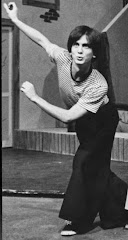Joseph Patrick Kennedy, Sr. made his fortune in real estate, banking, and the movies (he ran RKO for a while, and had several extramarital affairs, including one with star Gloria Swanson; he bequeathed his penchant for glamour pusses to his sons); he supplemented his income selling bootleg liquor during Prohibition. This guy was going places! He had politics in his blood, as his father served in the Massachusetts legislature, and he married into a political family as well. His wife, Rose Fitzgerald, was the daughter of the mayor of Boston. Together, they obeyed the pope and procreated like mad.

Everybody's been using the word "dynasty" with the Kennedys, and I guess it's appropriate. They certainly were a fun lot to watch from afar, weren't they? Let's take a gander:

JOSEPH PATRICK KENNEDY, JR.
1915-1944
He was the golden boy of the family, rich, handsome (well, they were all good lookers...at least, the boys were...) and destined for greatness. Papa Joe was determined that all his children would find substantial places in the world, but he had particularly high expectations of his eldest son. Junior studied law at Harvard and economics in London before undergoing officer's training and entering WWII. He died in a kamikaze-type mission into occupied France, where he and another officer were to pilot a plane filled with explosives, aim it at a cannon site, and parachute to safety before the plane crashed into its target. Who could predict something like this could go wrong? The plane detonated in flight, before ever leaving British airspace.
By the way, the guy next to Kennedy in this picture is Broadway star Matt Cavanaugh, who played Joe Jr. in the musical version of
Grey Gardens. You can catch him in the current
West Side Story revival. Hmm. I seem to have wandered off track here.

Anyway, Papa Joe and Mama Rose (no, not that Mama Rose, I mean Rose Kennedy) had a back-up plan for their political ambitions. It was this guy:

JOHN FITZGERALD KENNEDY
1917-1963

Everybody already knows this one's story. Young senator, fairy-tale marriage, a lucky break during a TV debate, then tragedy. But before that crummy trip to Dallas, JFK adopted the Camelot motif which continues to be used to describe his era today. Everybody knows his successes (Cuban Missile Crisis, banging Marilyn Monroe) and his failures (Bay of Pigs, keeping his affair

with Marilyn Monroe secret), and historians are pretty mixed about how effective a president he actually would have been, had he served a full term or two. He didn't have much of a chance to prove himself. His assassination was one of those pivotal moments during which everybody on the planet remembers exactly where they were. The only other moment like that in my lifetime was the 9/11 attack. Both were instances of catastrophe. I wonder why we don't all remember seminal GOOD moments so clearly, like where we were when Neil Armstrong played golf on the moon, or when Elaine Stritch finally won the Tony?
While the Kennedys were grooming Joe, and then Jack, for their glorious futures, they had a dirty little secret:

ROSEMARY KENNEDY
1918-2005
During her father's lifetime, she was kept strictly out of the public eye, at least until her sister Eunice stepped in (more on her below). She may have had some mild retardation, though experts today believe she simply had a lower IQ than her siblings, which led her to being the slow one in the family. In the highly competitive Kennedy clan, she could never keep up, and reacted with mood swings and tantrums. But she kept a diary through her teenage years, which has been examined and seems to reveal a normal, though depressed, child. She accompanied her parents to the White House to meet FDR, and was  presented to George VI during Papa Joe's tenure as US Ambassador to Britain. But her father was never pleased with her. "We don't want any losers around here," he would say, "We only want winners." Eventually, Joe was offered the chance to ease his daughter's mood swings, with a new procedure called a lobotomy (only 65 had been done, worldwide). He jumped at the opportunity to turn his daughter into a competitor, and the operation was done. And botched. Rosemary, who had been highly verbal and bright, became unintelligible, incontinent, and incapacitated. The truth about the lobotomy was hidden for many years, as it was assumed such a story would be unpalatable to American voters, so Rosemary became "the lost Kennedy," the mentally retarded girl living in an institution for the rest of her 86 years.
presented to George VI during Papa Joe's tenure as US Ambassador to Britain. But her father was never pleased with her. "We don't want any losers around here," he would say, "We only want winners." Eventually, Joe was offered the chance to ease his daughter's mood swings, with a new procedure called a lobotomy (only 65 had been done, worldwide). He jumped at the opportunity to turn his daughter into a competitor, and the operation was done. And botched. Rosemary, who had been highly verbal and bright, became unintelligible, incontinent, and incapacitated. The truth about the lobotomy was hidden for many years, as it was assumed such a story would be unpalatable to American voters, so Rosemary became "the lost Kennedy," the mentally retarded girl living in an institution for the rest of her 86 years.
By the way, take a look at that picture of Rosemary as a mature woman (above). If they ever make a musical about this gal's life, Kaye Ballard should play it. Maybe Sutton Foster should play her sister:

KATHLEEN AGNES KENNEDY CAVENDISH, MARCHIONESS OF HARTINGTON
1920-1948
Here was a Kennedy who was ready to party! High-spirited and rebellious, she gained her strict mother's disapproval early and often. She was educated in England while Papa Joe was ambassador there, and was named "the most exciting debutante of 1938." She carried that Kennedy Public Service Gene, of course, and was working in a Red Cross service center in 1943 when she met her future husband, the Marquess of Hartington. As heir to the duchy of Devonshire, you would think the Kennedys would be thrilled with the match, but he was a Protestant, and the devoutly prejudiced Mama Rose would not approve the marriage. "Kick" went ahead without her parents' blessing, and was married in 1944, with her brother Joe Jr. the only Kennedy in attendance. I wonder if the folks investigated a lobotomy for
her? Kick Cavendish became the toast of the younger London aristocracy, but her boisterousness drew raised eyebrows from the older establishment. Our party gal was not to become a duchess after all; her husband was killed in action only four months after the wedding. The young widow soon began an affair with another young nobleman, and they planned to marry after he secured his own divorce. A private plane carrying Kick and her fiance crashed in the south of France, and Kathleen Kennedy became the youngest of the nine siblings to die, at the age of 28.
There's got to be a Lifetime movie in this girl's story, don't you think? And there's a full-blown miniseries in the life of the next sister:

EUNICE MARY KENNEDY SHRIVER
1921-2009
Everybody knows this gal's story, as she died just a few weeks ago at the age of 88. She spent her early career like all the other Kennedys, employed in a variety of charitable organizations. In the 1950s, she became an executive in the Joseph Kennedy Jr. Foundation, a Catholic charity formed by her family in honor of her eldest brother. She gradually shifted the emphasis

of the charity to focus on the mentally handicapped, which eventually led to the formation of the Special Olympics, for which she is best known. Her husband, Sargent Shriver, was Ambassador to France for several years, and was the Democratic vice-presidential candidate in 1972. Her life-long work on behalf of the mentally challenged was a result, in part, of her sister Rosemary's retardation. She is the only woman to appear on a US coin while still living: she appears on the 1995 silver dollar commemorating the Special Olympics.
Eunice is remembered as a no-nonsense woman who worked tirelessly throughout her life, often on behalf of the mentally disabled. She clearly had a strong affection for her sister Rosemary, visiting her in the institution and seeing to it that she be included in various family functions over the years. I wonder what she thought of her younger sister, who appears to have been her opposite:

PATRICIA KENNEDY LAWFORD1924-2006
Pat was the socialite in the family, and had a fascination with her father's Hollywood career. She had hopes of becoming a film producer and director, but never made it that far. Hers was a particularly famous Kennedy spouse: she married British actor Peter Lawford in 1954. The couple

lived in Santa Monica, and hung out with Judy Garland and her family. The marriage was troubled from the start; Peter was a ladies man and a heavy drinker, and he was uncomfortable with the staunch Catholicism of the Kennedys. The marriage eventually ended in divorce (Pat, being the good Catholic, never remarried). In her later life, Pat battled alcoholism and cancer, and died at the age of 82.
This guy may be my favorite Kennedy, though I'm not sure why:

ROBERT FRANCIS KENNEDY
1925-1968
RFK was the "doer" in the Kennedy clan, and, as the third son, spent most of his life "in support." Perhaps that's why I have a fondness for him: I love supporting players. He worked

tirelessly on behalf of his brother's political agenda, and could be ruthless when dealing with adversaries. He was surely the most influential white guy backing the Civil Rights movement of the 1960s; as Attorney General under JFK, he sent soldiers to Mississippi to escort the first black student onto the University of Mississippi campus. After investigating Martin Luther King for communist affiliations (he even had his phone tapped), he came to admire the reverend, and was devastated by his assassination. He gave a stirring, impromptu speech in Indianapolis the night the news of King's murder was announced, and it's widely believed he prevented the rioting which was wide-spread in other heavily black cities.
Bobby was believed to be the most religious of his generation of Kennedys, and as such, he fulfilled his obligation to go forth and propagate. He and wife Ethel had 11 children. He entered the 1968 presidential campaign a bit late, but had a pretty good chance of securing the Democratic nomination after winning the California primary on June 5th. He was shot at the Ambassador Hotel in Los Angeles while taking a short cut through the kitchen, and died the next day.
Journalist
Robert Novak, who died earlier this month, was standing about 20 feet from Kennedy when he was assassinated. You know who else was in the hotel that fateful night? Bobby's little sister:
 JEAN ANN KENNEDY SMITH
JEAN ANN KENNEDY SMITH1928-
Jean was pretty shy when compared to other Kennedy girls, and lived much of her life out of the limelight which her siblings so enjoyed. But she was apparently a skilled diplomat, and served as US Ambassador to Ireland during the Clinton administration. Her husband, Stephen Edward Smith, was responsible for overseeing the various trusts granted to members of the extended Kennedy clan. But her biggest claim to fame is probably the fact that she gave birth to one of the more notorious of the Kennedy scions, William Kennedy Smith, who dragged the family into a high-

profile criminal matter in 1991. The scandal is just too delicious to overlook.
On March 29, 1991 (Good Friday), much of the Kennedy clan had gathered on their family estate in Palm Beach, Florida. In the late evening, aging party boy Senator Ted Kennedy awakened his son Patrick, and his nephew, the aforementioned William Smith, and said, "Let's go drinking." How's that for a terrific pater familias? The three of them hit the bars, and the younger boys picked up a couple of tricks...oops, I mean young ladies with impeccable morals. The elder Kennedy went to bed, and the young rapscallions took their dates to an empty house owned by the family. Smith and his date took a walk along the beach, during which the young lady claimed she was raped. (Smith says the sex was consensual.) The case went to trial, during which testimony from three other women, who claimed to have been assaulted by Smith, was excluded. Our boy was acquitted. In 2004, another woman charged Smith with sexual assault, but the case was dismissed; around this time, it was revealed that yet another woman had received payment from Smith as an out-of-court settlement in yet another sexual assault case.
Jean Kennedy Smith must be so proud of her little boy. I guess I shouldn't be so snide; the poor woman is now the last surviving member of her generation of Kennedys. As everybody in the world knows, her little brother died this week:
 EDWARD MOORE KENNEDY
EDWARD MOORE KENNEDY1932-2009
I used to see Senator Kennedy in my neighborhood, lunching on the patio of a French brasserie around the corner from my house. A red-faced, bloated, cheerful Teddy would be holding court in the late afternoon, with several empty wine bottles littering the tabletop. Like so many of his clan, he loved the booze. Though he claims otherwise, don't we all think he was drunk when he drove his car off the bridge at Chappaquiddick in 1969? He escaped the sinking car, deserting the drowning girl in the back seat, and did not call the cops until his car was discovered the next day. No indictments were issued over the event, but many political analysts believe the incident sank Teddy's chances (ooh, a pun!) at ever becoming president (that's a benign word, "incident," for what was an atrocious, possibly criminal act). But this week, I've heard some commentary which makes sense to me. Ted Kennedy was the baby of the family, the happy clown from whom not much was expected. Through no fault of his own, he was thrust into the role of patriarch of his highly visible, highly political family, and a presidential bid was expected of him. But it's possible he never really wanted it; he was asked in an interview, during his failed bid in 1980, why he wanted to be president. His bumbling answer rivals Sarah Palin's incoherence with Katie Couric. Once Teddy's presidential prospects were dashed, he leaped into his senatorial role, and truly became the Lion of the Senate everyone is eulogizing this week.
And whatever I think of his private life (that image of him puttering around the Kennedy estate in his underwear is one I'd like to forget), I think he did some great work in congress. Among other triumphs, he sponsored the Ryan White Aids bill, after a period in which the President of the United States (Reagan) would not even utter the word. Even so, some of the coverage of Edward Kennedy's passing seems overblown. He was just a guy who believed that serving the public was an honorable vocation.
I've been pretty snarky on this page, but putting that aside, from where I'm sitting, it seems like all the Kennedy siblings felt an obligation to serve those less fortunate than themselves. Maybe that was forced into them by their parents, or maybe they came to that attitude naturally, but who really cares? They did a lot of good. Is that the Camelot Mystique of which JFK was so fond? Not sure. Camelot was a fantasy place where it only rained after dark, and the fog

disappeared by 8 AM. But it had a "fleeting wisp of Glory," so maybe the Kennedys belong there after all.
Here's what I do know. This generation of Kennedys had a whole lot of faults. But they tried to make the world a bit better to live in. I think they may have succeeded, too. They deserve some kudos for that.
 Whatever, I was able to catch two productions which prove that, even in the Dog Days of Summer, DC is kind to a Theatre Beast.
Whatever, I was able to catch two productions which prove that, even in the Dog Days of Summer, DC is kind to a Theatre Beast. showy show, wouldn't you?
showy show, wouldn't you? box office dude must have pegged me as a ham, for he asked to plant me down front in order to hand Donna some fake flowers at the Act One finale. I couldn't refuse the poor guy; he obviously had to find someone each and every performance to do this, and that can't be easy. But sitting in the front row is just too close for my tastes: not only do you usually miss the overall picture the director is creating with his staging, but you often get spit on, too. It is almost impossible to enunciate clearly onstage without some spittle escaping at least once or twice. Front row dwellers usually get a spray or two.
box office dude must have pegged me as a ham, for he asked to plant me down front in order to hand Donna some fake flowers at the Act One finale. I couldn't refuse the poor guy; he obviously had to find someone each and every performance to do this, and that can't be easy. But sitting in the front row is just too close for my tastes: not only do you usually miss the overall picture the director is creating with his staging, but you often get spit on, too. It is almost impossible to enunciate clearly onstage without some spittle escaping at least once or twice. Front row dwellers usually get a spray or two.
 musical director and pianist Doug Lawler, who has a comic timing as precise as any of the actors.
musical director and pianist Doug Lawler, who has a comic timing as precise as any of the actors. From the moment the audience entered the STC's Harman Center and was faced with a row of filthy urinals, well, you knew this would not be your Olivier's King Lear. Director Robert Falls recreated his controversial Goodman Theatre production of several years ago, and provided a raw and visually arresting event. He placed the action in a Britain which mirrored the collapse of the Marshall Tito era in Yugoslavia; I think the concept worked like gangbusters.
From the moment the audience entered the STC's Harman Center and was faced with a row of filthy urinals, well, you knew this would not be your Olivier's King Lear. Director Robert Falls recreated his controversial Goodman Theatre production of several years ago, and provided a raw and visually arresting event. He placed the action in a Britain which mirrored the collapse of the Marshall Tito era in Yugoslavia; I think the concept worked like gangbusters.  His principle cast from Chicago was almost intact, led by Stacy Keach and Ed Gero as Lear and Gloucester. More on them in a mo'. The supporting cast here was pretty swell, with some terrific surprises. Lear's wicked daughters were wicked indeed: Kate Arrington's Regan came across as a blond bimbo with a decidedly vicious streak (think Paris Hilton by way of Lucretia Borgia) and Lise Bruneau's Goneril was the most nympho-maniacal royal since Catherine the Great did it with that horse. She worked that fur coat like nobody's bizness. (BTW, kudos to Bruneau, who stepped into the role with minimal
His principle cast from Chicago was almost intact, led by Stacy Keach and Ed Gero as Lear and Gloucester. More on them in a mo'. The supporting cast here was pretty swell, with some terrific surprises. Lear's wicked daughters were wicked indeed: Kate Arrington's Regan came across as a blond bimbo with a decidedly vicious streak (think Paris Hilton by way of Lucretia Borgia) and Lise Bruneau's Goneril was the most nympho-maniacal royal since Catherine the Great did it with that horse. She worked that fur coat like nobody's bizness. (BTW, kudos to Bruneau, who stepped into the role with minimal  rehearsal, and ran with it.) You had to love Dieterich Gray's skateboarding Oswald, and Chris Genebach's coked-out Cornwall provided the most brutal death scene in an evening full of death scenes. Getting the picture? Edgar wore a diaper and Edmund wore a suit, and somehow, it all made sense here.
rehearsal, and ran with it.) You had to love Dieterich Gray's skateboarding Oswald, and Chris Genebach's coked-out Cornwall provided the most brutal death scene in an evening full of death scenes. Getting the picture? Edgar wore a diaper and Edmund wore a suit, and somehow, it all made sense here.
 production of Lear deserves a further life. (I have no inside info regarding this, though someone told me the set pieces and costumes were all boxed up for storage, which means there may be hope it will resurface one day. I think this particular production would succeed in New York.)
production of Lear deserves a further life. (I have no inside info regarding this, though someone told me the set pieces and costumes were all boxed up for storage, which means there may be hope it will resurface one day. I think this particular production would succeed in New York.)














 JEAN ANN KENNEDY SMITH
JEAN ANN KENNEDY SMITH
 EDWARD MOORE KENNEDY
EDWARD MOORE KENNEDY















 Prior to the creation of 60 Minutes, Hewitt had a substantial career in television journalism. He was the first news producer to superimpose words onto the TV screen during a news story, and
Prior to the creation of 60 Minutes, Hewitt had a substantial career in television journalism. He was the first news producer to superimpose words onto the TV screen during a news story, and 









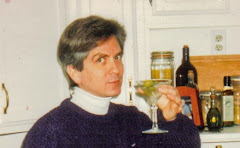
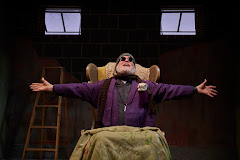




























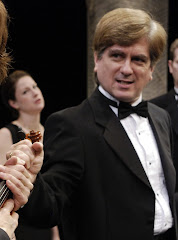
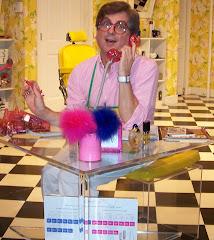
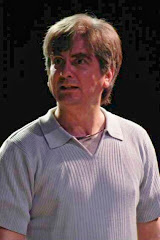
,+Olney+Theatre+Center,+2004.jpg)



,+Shakespeare+Theatre+Company,.jpg)
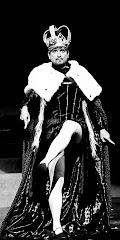

,+Warehouse+Theatre,+1999.jpg)
,+Are.jpg)
,+Everyman+Theatre,2002.jpg)
,+First+Nationa.jpg)
,+Shakespeare+Theatre+Company,.jpg)



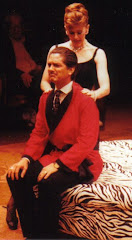

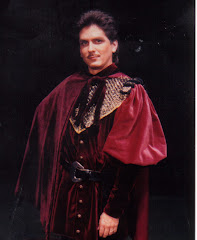
,+Granada+Th.jpg)
,+Globe+Playhouse,.jpg)
,+CSUN,+1976.jpg)
